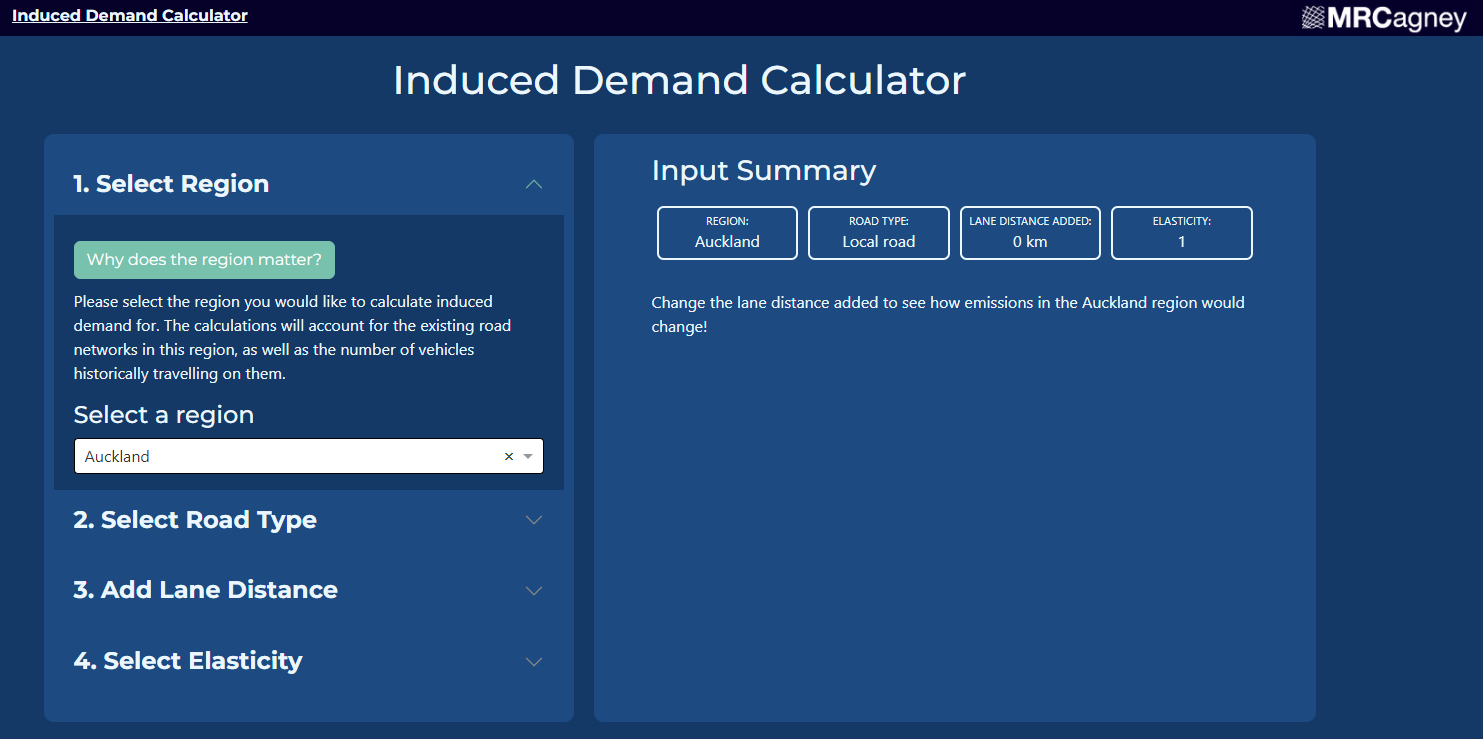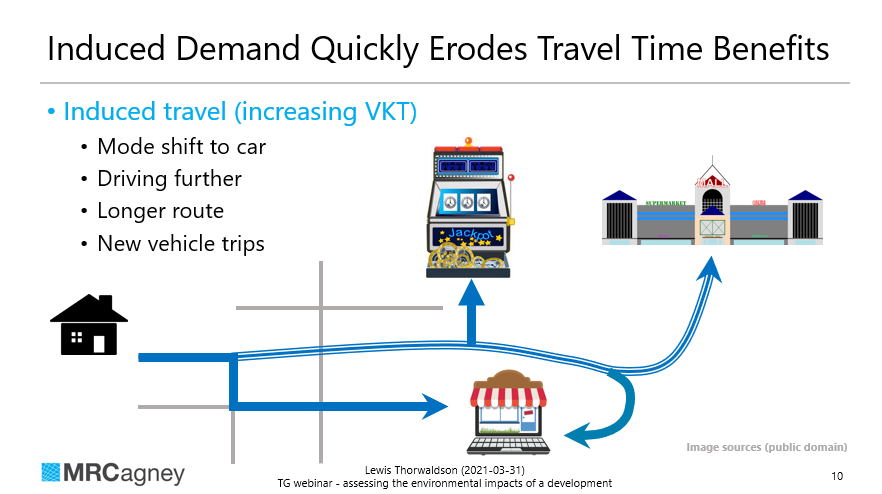Introducing the Induced demand calculator
Wed, November 30, 2022 | Climate Change and Emissions ReductionThis article was originally posted on the MRCagney LinkedIn.
In 2020, we created the Transport 2030 visualization tool website (which evolved in to Transport 2035). The aim of the tool was to help decision makers and members of the public understand and test the range of options we have for slashing transport emissions in Aotearoa New Zealand.
Now in 2022, we are releasing another accessible visualization tool. The Induced Demand Calculator specifically focuses on communicating the likely emissions associated with any proposed new road widening project.

The Induced Demand Calculator
What is congestion?
While this may seem a silly question, it is important to recall the fundamental definition of congestion. Congestion is when more vehicles try to use a road segment than can be processed at free-flow speeds. Congestion is literally people lining up waiting to use a service (road capacity at a given time) that is provided free of charge, usually without restriction.
When congestion becomes high enough that operating speeds are reduced to a level considered to be unacceptable, the “common sense” solution is usually to build more capacity. Unfortunately, complex systems like urban and regional transport and travel behaviour frequently function in ways that defy what would seem to be common sense. In reality, expanding capacity in response to congestion usually creates “induced demand”, which leads to more congestion. The capacity solution is often assumed as obvious, or at least given priority in decision making processes when induced demand is not given enough weighting.
What is induced demand?
There is an excellent animated slideshow explaining induced demand on the induced demand calculator website. But briefly, induced demand is a tested phenomenon that when capacity is added to a road segment by widening or through optimisation, additional trips are enticed onto the road until previous congestion levels return. This often happens much sooner than when transport models predict. This makes sense from an economics perspective – if you ease the constraint for an unpriced, in demand service, people will consume more of it until the constraint is reached again.

How Induced Demand erodes travel time benefits - L. Thorwaldson
The Induced Demand Calculator aims to communicate rapidly and as simply as possible a rough figure of expected induced demand for a specific project rather than having only the theory of the phenomenon to talk about. This is important because transport is a highly political issue, often discussed in the public, and project decision making processes require specific, evidence-based figures.
This calculator allows planners, decision makers and the general public to quickly answer the question, ‘if we build X, how much will that increase transport emissions?’
How does the calculator work?
The calculator allows you to choose a region of interest, total lane-km to be added and a value for elasticity (the amount of induced demand response from a % increase in total lane-km). Existing total lane-km, emissions factor and VKT values are based on existing data of each region. Together, these values are used to estimate the induced emissions from an expansion.
Changing the goals of the system:
Humans are known to take the path of least resistance. Time relativity between transport modes is a huge factor in people’s decisions about if and how they will make a trip.
Our country’s stated goal is to reduce transport emissions. Are there better ways to improve people’s access without building more private vehicle capacity?
What do you think of Induced Demand Calculator? Did it make you think? Are there any specific situations where this tool will be useful for you?
Check out the Induced Demand Calculator here.
Authors: Ellie Craft and Lewis Thorwaldson